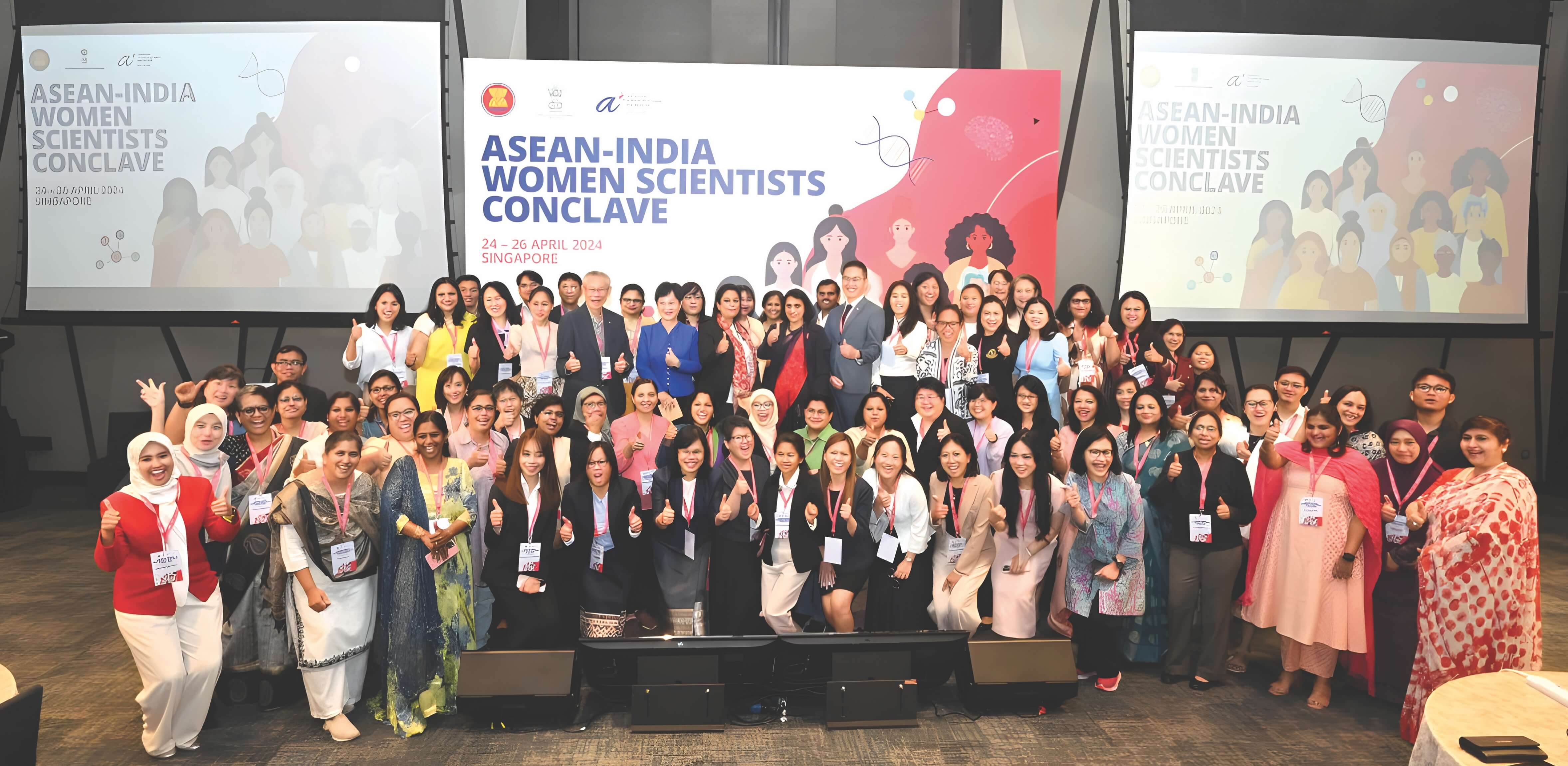




ASEAN’s aspiration to produce a highly skilled and productive workforce to prop up economic growth may be in peril.
The ASEAN Food and Nutrition Security Report 2021 (Volume 1) notes that millions of children in the region—its future workforce—are suffering from malnutrition. Malnutrition traps individuals in the cycle of poverty, decreases labour productivity, and exacts a heavy toll on the economy.
Of the various forms of malnutrition, stunting is the most widespread in the region. According to the Report, 15 million children under five are stunted or fall below the age-appropriate height. Stunting affects almost all countries in the region, but is highest in Cambodia and Lao People’s Democratic Republic and high in Indonesia, Malaysia, Myanmar, and the Philippines. It is also prevalent to some degree in Thailand and Viet Nam.
Wasting, another form of malnutrition, is also present in the region. The Report states that four million children under five are wasted or too thin for their height. They are spread across Cambodia, Indonesia, Lao People’s Democratic Republic, Malaysia, Myanmar, the Philippines, and Thailand, and to some extent, Viet Nam.
Undernutrition persists into middle childhood and adolescence. “Prevalence of thinness hovers around 10 per cent in nearly all ASEAN Member States (with greater than 17 million adolescents affected),” the Report
The costs of stunting and wasting
Stunting is particularly worrying since it is associated with an underdeveloped brain, with long lasting and largely irreversible consequences, according to UNICEF. Children afflicted with stunting have lower mental and learning capacity and typically struggle in school. When they become adults, they tend to have limited job prospects, underperform at work, earn less, and are prone to nutrition-related chronic diseases, such as diabetes, hypertension, and obesity.
Wasting is also a concern. “Wasted” children have weaker immune systems, which make them more susceptible to infections and diseases, often resulting in death. They are also more likely to experience developmental delays.
Child undernutrition increases a country’s spending on education and health care and impacts future productivity and economic growth. The World Bank estimates that some ASEAN countries lose between 2.4 per cent and 4.4 per cent of their GDP annually due to undernutrition.
Pre-pandemic estimates from World Bank and other sources put Cambodia’s annual losses at 400 million US dollars, equivalent to 2.5 per cent of its GDP (2014); Lao PDR at 200 million or 2.4 per cent of GDP (2013); the Philippines at 4.4 billion US dollars or 1.5 per cent of GDP (2015); and Indonesia at 2-3 per cent of its GDP (2015).
Commitment to end all forms of malnutrition
ASEAN’s commitment to curb malnutrition is articulated in the ASEAN Leaders Declaration on Ending All Forms of Malnutrition and the ASEAN Strategic Framework and Action Plan on Nutrition 2018-2030.
At the national level, each Member State had integrated nutrition into their national development strategies and crafted national nutrition plans and targets that align with their regional and international commitments and the Sustainable Development Goals.
These national nutrition plans steer policy and programme interventions at national and subnational levels. Interventions typically follow the life-course approach (womb to tomb), starting with improving maternal, infant, and young child nutrition. Evidence shows that the first 1,000 days, from conception up to age two, are the most critical period in a child’s growth and development, and where nutrition interventions can create optimal impact. Other initiatives revolve around preventing and treating malnutrition among school-age children and adolescents, and creating a healthy food environment for population of all ages.
National-level interventions: Areas of progress
Member States have taken concrete steps to improve maternal nutrition. The ASEAN Food and Nutrition Security Report 2021 notes that all countries have policies and programmes on nutrition counselling and promotion and micronutrient supplementation during pregnancy. Seven have modified their antenatal care policies, standards, or guidelines to meet the 2016 WHO recommendations, while five raised the number of recommended antenatal care visits to eight based on WHO standards.
Member States have also made substantial headway in infant and young child nutrition. According to the Report, all Member
States advocate and have measures to support breastfeeding and complementary feeding. They all carry out programmes on child growth monitoring and promotion. Additionally, Member States have committed to stronger compliance with the International Code of Marketing of Breast- milk Substitutes to encourage breastfeeding and limit children’s sugar consumption in early years.
To promote healthy eating and lifestyle and address malnutrition among school-age children and adolescents, Member States have introduced national or subnational programmes that are implemented through the school system. Eight have school feeding programmes, while seven are supporting the distribution of micronutrient supplements like iron. Almost all have initiatives to monitor children’s growth in schools, include physical education in the school curriculum, and ensure that schools have safe drinking water and sanitation and hygiene facilities.
Partnerships on the ground: Some examples
Member States’ policy and programme interventions are often supported and complemented by auxiliary initiatives from nongovernment partners as well as local or subnational governments.
In Indonesia, for example, Nutrition International and Save the Children are working with the Indonesian government to tackle high stunting prevalence in
two provinces, West Java and East Nusa Tenggara. Their Better Investment for Stunting Alleviation (BISA) project, launched in 2019, is designed to help 3.3 million people gain access to nutrition services and avert 6,300 stunting cases and 161,000 anemia cases.
“Nutrition International is focused on the health system aspect of addressing stunting, while Save the Children is focused on hygiene, sanitation, breastfeeding, and complementary feeding at the community level,” says Donatus Marut, BISA’s deputy chief of party.
“We promote the capacity building of district health offices and Puskesmas [community health centres],” he explains. “We also develop the capacities of the staff at the Puskesmas level in providing maternal and child nutrition and health services— how to provide counseling, education, and practical information to pregnant women, lactating women, and adolescents in school and out-of-school.”
Nutrition International is also supporting the distribution of micronutrient supplements in schools. Its acting country director, Rozy Afrial Jafar, says the weekly iron-folic acid supplements given to adolescent girls is intended to break the cycle of intergenerational malnutrition in Indonesia. “Young girls who are unhealthy grow
up to become mothers with unhealthy pregnancies,” he says.
Likewise, the organisation has been supporting efforts of the government to strengthen its food fortification programme. Jafar notes that it was successful in advocating changes in the composition of fortified wheat flour in keeping with global standards. It has also been rendering technical assistance on initiatives to fortify rice.
In Lao PDR, Save the Children and its partner-NGOs are working with local health units to raise the nutrition levels of children under five, adolescent girls, and pregnant and lactating women in 14 districts in the provinces of Huaphanh, Luang Namtha, Luang Prabang, and Phongsaly.
This multiyear project, called Sustainable Change Achieved through Linking Improved Nutrition and Governance (SCALING), involves a range of interventions, including the development of nutrition plans at village and district levels; communication strategies to change the dietary, sanitation, and health practices of children, parents, and caregivers; and construction of water supply systems in select areas.
In the Philippines, community-based programmes are being undertaken side by side with national-scale programmes. An example is Malabon city’s Karinderia para sa Kalusugan ni Chikiting (KKC), a programme launched in 2018 that involves providing mid-afternoon snack per day for 120 days to 24- to 59-month-old undernourished children, 6- to 23-month-old children, and nutritionally-at-risk pregnant women.
“We identified the barangays [communities] where there were pockets of malnutrition and then identified and screened karinderia [food stalls] located within these communities that are capable of feeding at least 10 children, says Fidel Baltazar dela Cruz, manager of the KKC programme. “The programme has an added benefit of supporting the livelihood of small food businesses in the city,” he adds.
COVID-19 pandemic and malnutrition
While the impact of the COVID-19 pandemic on malnutrition in the region has yet to be fully assessed, the Report says the decline in household incomes, broken food supply chains, and disruption of school feeding programmes have likely deprived more children of adequate and nutritious food.
ASEAN Member States, according to the Report, responded by using existing social protection programmes to “ensure that the most vulnerable households had the resources required to continue to feed their families.” Some launched campaigns to promote safe and healthy diets amidst the pandemic, stopped the distribution of donated unhealthy food products, and ensured stable food prices.
The Report says nutrition stakeholders in ASEAN need to do more to secure food
and nutrition for the populace in case of future emergencies. Improving the quality of existing social protection schemes is one way of enhancing the responsiveness of each country.
Nutrition International’s Jafar suggests incorporating nutrition into the social welfare programme to address food insecurity arising from the pandemic. In the case of Indonesia, for example, he says government can ensure that the vouchers distributed to poor households under its welfare programme, Program Keluarga Harapan, are used to access not just any kind of food, but nutritious, fortified food.
The race to turn the tide
Progress towards curbing the levels of undernutrition in the region is still inching along despite many laudable policy and programme interventions. The Report, citing data from the 2020 Global Nutrition Report, notes that only two Member States are “on course” to achieve the global target for reducing childhood stunting, and none at all are set to hit the target for childhood wasting reduction.
To bring down undernutrition rates at a more accelerated pace, the Report recommends a number of measures that can be undertaken by Member States, including:
- Increase in government expenditure on nutrition programmes (found to be remarkably low in four Member States);
- Scaling up of proven nutrition interventions, such as access to antenatal care for pregnant women, breastfeeding support for mothers, age-appropriate complementary feeding for children starting at six months, and micronutrient supplementation;
- Expansion of social protection schemes to help poor households access food and health services;
- Collection of disaggregated data to understand nutrition inequalities and identify groups and communities that require the most support;
- Fortification of staple food and condiments, such as grains, salt and oil, to address micronutrient deficiencies;
- Control in the marketing of junk foods and sugary drinks, front-of-pack labelling for food products, and provision of incentives for healthy products and behaviours; and
- Strengthening of health care providers’ ability to conduct health and nutrition research and surveillance, and deliver nutrition services.
Urgent action is also needed to address emerging nutrition trends and challenges in the region. One is the rising prevalence of overweight and obesity among school-age children. Another is the worsening hunger and food insecurity brought about by the post-pandemic economic downturn and the impact of climate change on food systems.
ASEAN Member States have a narrow window of opportunity to act on these measures and turn the situation around. The stakes are simply too high for inaction.








